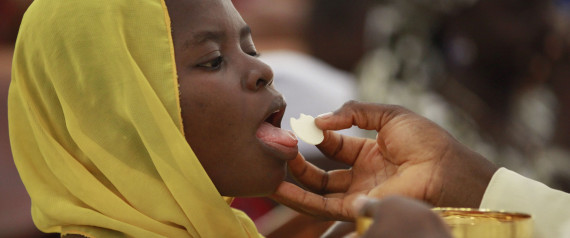The Mirror of Contemplation in St Gregory of Nyssa’s Commentary on the Song of Songs
By Fr. Matthew Baker in The Sounding
St. Gregory of Nyssa’s Commentary on the Song of Songs offers a profound contemplative theology in which the category of vision occupies a central place. To see correctly for Gregory involves a process in which exegesis and askesis, a proper interpretation of scriptural images and the purification of the soul’s eye, are inseparable, having as their common goal the vision of God.
All vision is tied to imitation, and subject to the free direction of the will. Human nature is mimetic through and through: a person becomes what he beholds. This spiritual insight is expressed most powerfully by Gregory’s use of the image of the mirror.
“Beauty” is perhaps for Gregory the most summary characteristic of God. Much as in his Homilies on the Beatitudes, in his commentary on the Song of Songs Gregory regards the vision of this divine beauty given to those who are purified as taking place not directly, but as reflected in “the mirror of our souls.”
Even a man perfect in virtue is unable to look at the sun; “rather he sees it within himself.” A reflective vision of God is made visibly manifest in the life of virtue, from which we obtain a knowledge of the good and an image of the beauty of the divine archetype. Read rightly, the Song of Songs is an instruction on the way towards the restoration of this beauty, which is that of the divine bridegroom, to the bride.
For Gregory, the “bride” of the Song of Songs is at once the individual soul and collectively the whole Church. To see the Church truly is to see, as in a mirror, a face with the very same features as Christ. By giving herself to the beloved bridegroom, the bride receives the beauty of her beloved.
The restoration of divine beauty — the return to the original divine likeness given in creation — takes place through the free and uncompromising pursuit of virtue. “The end of a life of virtue is likeness to God.” Human nature has an inherent capacity to reflect divine beauty; it is like a mirror, which “takes on different appearances according to the impressions of free will.” As Gregory elaborates:
“If gold is held up to the mirror, the mirror assumes the appearance of gold and reflects the splendor of gold’s substance. If anything abominable is held up, its ugliness is impressed on the mirror… Thus the mirror represents in its own being whatever is placed before it. So too the soul, when cleansed by the Word from vice, it receives within itself the sun’s orb and shines with this reflected light.”St Gregory’s analogy of the mirror underscores that the life of Christian virtue by which the soul is restored to divine beauty is not only active, but equally contemplative. This life consists of a continual looking to Christ alone: “How can one behold a beautiful sight in a mirror unless the mirror has reflected the image of a beautiful form? Human nature is also a mirror, and it was not beautiful until it drew near to Beauty and was transformed by the image of the divine loveliness.”
As we have shown, Gregory accords great power to sight, for both good and ill. According to him, the eyes are the most honorable part of the body. Commenting on the verse, “Your eyes are doves” (Song of Songs 1:5), he writes:
“Persons skilled in studying natural phenomena say that the eye sees by receiving the impression of images emanating from visible objects. For this reason the beauty of the bride’s eyes is praised since the image of a dove appears in her pupils. Whenever a person gazes upon an object he receives in himself an image of that object.”
In Gregory’s interpretation, the “dove” here represents the impression of the Spirit upon the one who is purified of carnal vision, an impression which enables one to behold the beauty of the bridegroom Jesus Christ.
As this example suggests, Gregory holds that it is the object seen, according to its own intelligible form, that enables vision: “Images of visible reality striking the purity of the eye’s pupil effect the act of seeing, that is, a form impresses itself upon the eye like a mirror.”
Seeing has a mimetic, formative character, under the sway of whatever is seen. “Those who gaze at the true God receive in themselves the properties of the divine nature.” And contrariwise, “those who attend to the vanity of idols are changed into what they behold and become stone instead of men.”
A crucial place is occupied also by the human will in the act of seeing. The soul is not only a mirror, but “a living mirror possessing free will,” which must thus prepare itself morally for vision. Only the pure in heart see God, and virtue purifies the eyes. Conversely, however, Gregory underscores that it is the vision of God itself that purifies and gives virtue.
This delicate balance – in reality, an asymmetric play of divine grace and human free will – gives a dynamic character to Gregory’s theology of divine vision. And here it is Moses, who “sought God as if he had never seen Him,” who is Gregory’s prototype of the God-seer.
Divine vision begins with the visible images of Scripture, but passes beyond this to darkness, and finally to spousal union. The purified eye penetrates into the future. Yet the restoration to the beauty of the divine likeness must pass through conformation to the likeness of Christ’s death.
The “shadow” of Christ’s body acts as mediator of divine light for us who live in darkness. In “looking to above” to behold the form of God and his divine goodness, Gregory reminds us, the soul’s mirror must reflect that form of a servant which Christ the mediator assumed in becoming man.



No comments:
Post a Comment